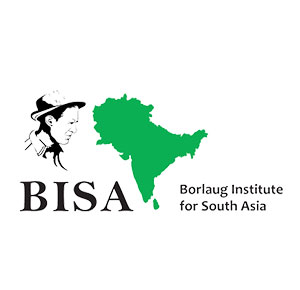Major Research Thrusts
- Co-ordination of multi-location AICRP Resource Management trials.
- Resource conservation technologies and Conservation Agriculture for the sustainability of wheat based systems.
- Efficient nutrient management in wheat based systems.
- Improved water use efficiency for efficient management of scarce water resources.
- Developing efficient weed management strategies in wheat based systems.
- Diversification/Intensification of rice-wheat for enhancing the soil and crop productivity and profitability
Research Achievements/Technologies Developed
- Need based nitrogen application using NDVI sensor help in saving about 20% nitrogen in both rice and wheat crops without any yield penalty.
- Top dressing of urea just before irrigation in wheat is more beneficial than application after irrigation.
- Integration of organic and inorganic fertilizers is the best approach to improve factor productivity.
- Phosphorus skipping either in rice or in wheat produced similar rice-wheat productivity.
- Scheduling irrigation at 60 kPa produced significantly higher grain yield compared critical growth stages.
- Seeding un-primed seed in air dry soil followed by irrigation and seeding pre-germinated seed at optimal soil moisture level produced statistically similar yield.
- Significantly higher grain yield recorded under drip + rainport method of irrigation followed by drip and sprinkler method of irrigation over check basins method of irrigation.
- Radish and turnip seeding in furrows under bed planting did not hamper wheat productivity and provides additional vegetable production.
- Growing of berseem crop in the rotation reduced weed population in subsequent wheat cycle.
- Diversification/intensification of rice -wheat system, once in three years, always enhanced the net return, when all crops (except rice) were grown on raised bed in a system approach.
- Inclusion of oilseed or pulses on beds once in three years or intensification by growing vegetable pea in between rice and wheat or green gram after wheat showed higher return as compared to conventional rice-wheat system.
- Intensification of rice-wheat by growing short duration green gram var SML 668 after wheat harvest could reduce 25 % N requirement for rice as well as green gram production to the tune of half tonne/ha.
- Coordinated the agronomic evaluation of AVT-II year genotypes and contributed to the release of improved wheat varieties.
- The zero-tillage machine was improved upon during 1996-97 by replacing the rigid side drive wheel with balancing wheel and bringing the drive to front of the machine and making it floating type. The zero tillage technology was perfected in the farmers’ participatory trials and the long term experiments were also initiated at the research farm simultaneously. Subsequently, for faster spread of the technology, the machines were also made available to a number of AICRP centers. This is the machine now being widely used throughout the Indo-Gangetic plains.
- The bed planting machine was also improved during 1997-98 and was evaluated at research as well as at farmers’ fields. This machine was also supplied to AICRP centers.
- Improvised and evaluated the Rotary-Till-Drill at research and farmers’ field for direct seeding of wheat after rice harvest.
- For Conservation Agriculture, Rotary-Disc-Drill was got fabricated from Beri Udyog Limited, Karnal for seeding under loose residue conditions. This is the only machine which can also be used for seeding wheat and other crops in sugarcane ratoons.
- In a long term tillage experiment in rice-wheat system, the wheat yield was not affected by tillage either in rice or in wheat. In case of rice, there was non-significant effect of tillage in wheat but no-till transplanting gave significantly lower yield compared to puddle and un-puddle transplanted rice.
- In long term maize-wheat system, maize yield was better in Zero tillage and conservation tillage options.
- The wheat productivity was not significantly affected by different residue management practices and only nitrogen had significant effect and response was up to 150 kg/ha.
- The surface residue retention ≥6 t/ha improved the wheat productivity when only two irrigations were applied. The other benefits were less weed infestation, temperature moderation and improvement in soil organic carbon.
- Under various nitrogen management options, the direct seeded rice yield (varieties Pusa 1509 and NK 3325) was significantly lower than the puddled transplanted rice.
- Various herbicides and herbicide mixtures were identified for management of broad spectrum weed flora in wheat including resistant biotypes of Phalaris minor.
- Were the first to report multiple herbicide resistance in Phalaris minor and sulfonyl urea resistance in Rumex dentatus and Polypogon monspliensis. The management strategies to control these weeds were developed.
- Flumioxazine, flufenacet, pendimethalin, and pyroxasulfone were found effective against multiple herbicide resistant Phalaris minor and sulfonyl urea resistant Polypogon monspeliensis.
- Narrow spacing of wheat (15 cm row to row) was found better in suppressing weeds compared to recommended spacing of 20 cm.
- Crop rotations that can be used for diversification of rice–wheat are pigeon pea-wheat, maize-wheat-greengram and rice-mustard-green gram.
Facilities Available
- Facilities for soil and plant analysis (Atomic absorption Spectrophotometer, UV-visible Spectrophotometer, Automatic N analyzer, Flame photometer, Grinding mills, pH Meter,EC meter, Water purifier, ovens, Hot plate, Seed counter, precision Balances etc).
- Equipments for field studies (NDVI sensors, Infra-red thermometer, Recording penetrometer, Soil moisture meter, Leaf canopy analyser, Soil thermometers, Tensiometers etc.)
- New generation agricultural machinery (Rotary-Disc-Drill, Turbo Happy Seeder etc.)








